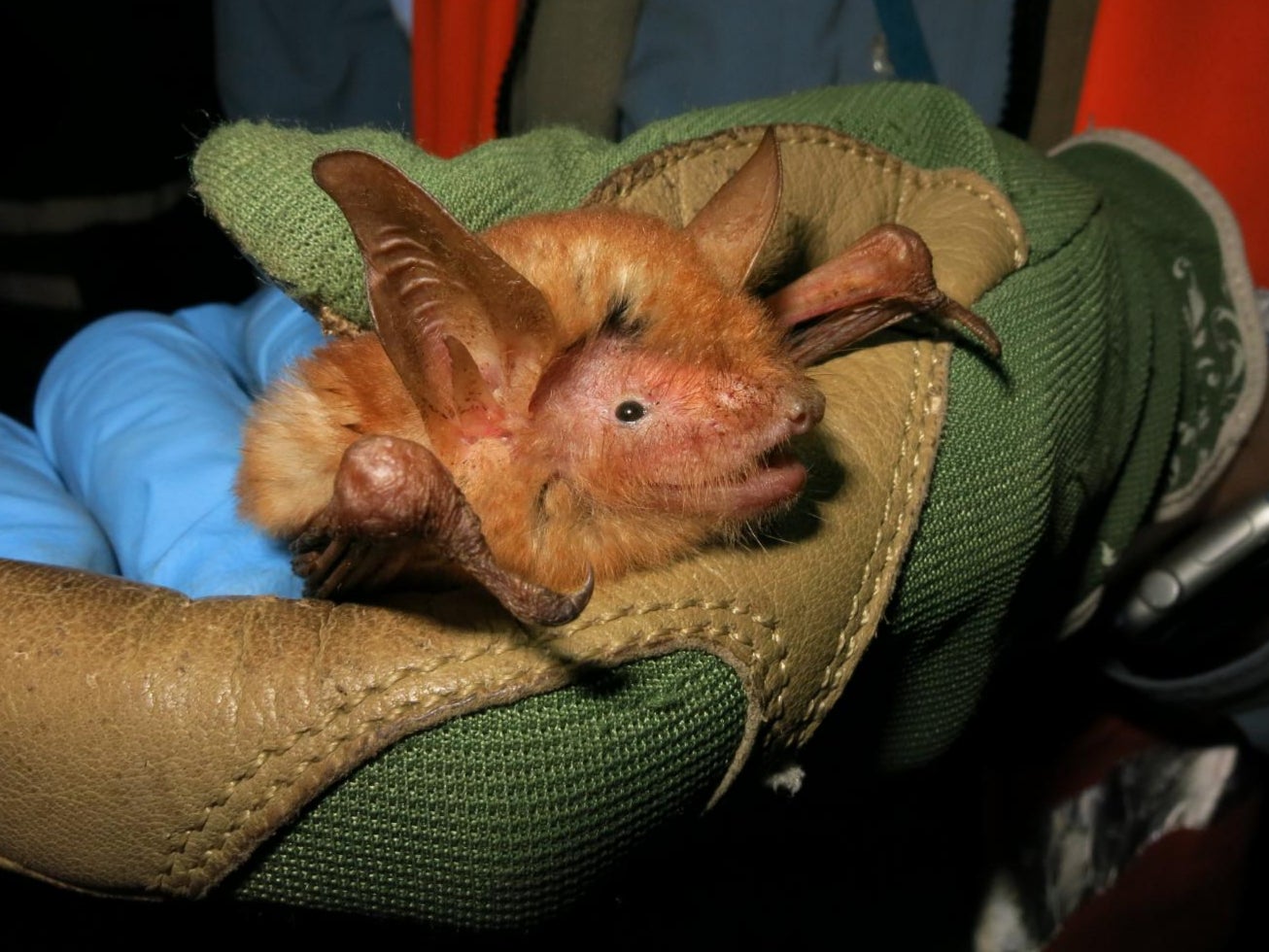Scientists discover ‘spectacular’ new species of bright orange bat
Researchers stumble across previously unknown mammal while researching biodiversity of collapsing mine tunnels in remote West African mountains

Your support helps us to tell the story
From reproductive rights to climate change to Big Tech, The Independent is on the ground when the story is developing. Whether it's investigating the financials of Elon Musk's pro-Trump PAC or producing our latest documentary, 'The A Word', which shines a light on the American women fighting for reproductive rights, we know how important it is to parse out the facts from the messaging.
At such a critical moment in US history, we need reporters on the ground. Your donation allows us to keep sending journalists to speak to both sides of the story.
The Independent is trusted by Americans across the entire political spectrum. And unlike many other quality news outlets, we choose not to lock Americans out of our reporting and analysis with paywalls. We believe quality journalism should be available to everyone, paid for by those who can afford it.
Your support makes all the difference.Scientists working in the caves and mining tunnels of the Nimba Mountains in Guinea, West Africa, have discovered a “striking” new species of orange and black bat.
The bat was first seen in 2018, when a team of scientists, led by the American Museum of Natural History, and the organisation Bat Conservation International were carrying out field surveys to ascertain which species live in the mountains’ old mining tunnels, known as adits, and at what time of year.
The scientists have said the new species is likely to be critically endangered, not least because it has only been found in this one mountain range and it appears a significant part of its territory is in the adits, which are in various states of collapse and will disappear in time.
“In an age of extinction, a discovery like this offers a glimmer of hope,” said Winifred Frick, chief scientist at Bat Conservation International and an associate research professor at the University of California, Santa Cruz.
“It's a spectacular animal. It has this bright-orange fur, and because it was so distinct, that led us to realise it was not described before.”
She added: “Discovering a new mammal is rare. It has been a dream of mine since I was a child.”
Dr Frick and her colleagues were working with local mining company Société des Mines de Fer de Guinée (SMFG), when they stumbled across the new species by accident.
The team had been carrying out field surveys in the disused mine tunnels with a particular interest in another species of bat - Lamotte's roundleaf bat, Hipposideros lamottei, which is listed by the International Union for Conservation of Nature as critically endangered and has only ever been recorded in the Nimba Mountains.
While surveying for this bat, the researchers found something peculiar - a bat that looked nothing like Lamotte's roundleaf bat and did not match the descriptions of any other species that they knew occurred in the area.
Later the same night, they called American Museum of Natural History curator Nancy Simmons, a bat expert, for help identifying it.
“As soon as I looked at it, I agreed that it was something new,” said Dr Simmons, the lead author of the paper and Bat Conservation International board member.
“Then began the long path of documentation and gathering all the data needed to show that it's indeed unlike any other known species.”
The team collected a dizzying array of data on the bat, including morphological - it’s form; morphometric - size and shape; how it uses echolocation, and they analysed genetic data, including comparative data from collections at the American Museum of Natural History, the Smithsonian National Museum of Natural History, and the British Museum.
The team named the new bat Myotis nimbaensis, meaning “from Nimba”, in recognition of the mountain range in which it is found.
Regarded as a chain of “African sky islands”, the Nimba Mountains have peaks rising between 1,600-1,750 metres (about 1 mile) above sea level and are surrounded by drastically different lowland habitats. Their highly unusual topography means they are home to exceptional biodiversity, including bats.
“In addition to the Lamotte's roundleaf bat, it's possible Myotis nimbaensis could be the second bat species found only in this particular mountain range,” said Jon Flanders, Bat Conservation International's director of endangered species interventions.
The study is part of an ongoing effort critical in helping the Nimba Mountain bats survive.
Bat Conservation International and SMFG have already started working together to build new tunnels, reinforced to last for centuries and in habitat away from the mining project, for the Lamotte's roundleaf bat.
The researchers said “although little is known yet about the population and range of Myotis nimbaensis, efforts like this will likely help it as well”.
The species is described for the first time in the journal American Museum Novitates.




Join our commenting forum
Join thought-provoking conversations, follow other Independent readers and see their replies
Comments